A rolled rim is an indicator that a copper pan is thin. Sometimes that’s fine, but other times it’s a warning sign of low quality.
A rolled rim is a technique to reinforce the lip of a copper pan with a loop of stronger metal. The coppersmith wraps a ring of iron or steel wire around the upper rim of the pot, curls the copper over and around it, and tucks the edges under so you can’t see the inner reinforcing ring. The ring’s added tensile strength holds the pan’s rim in shape and keeps it from deforming or tearing apart under stress.
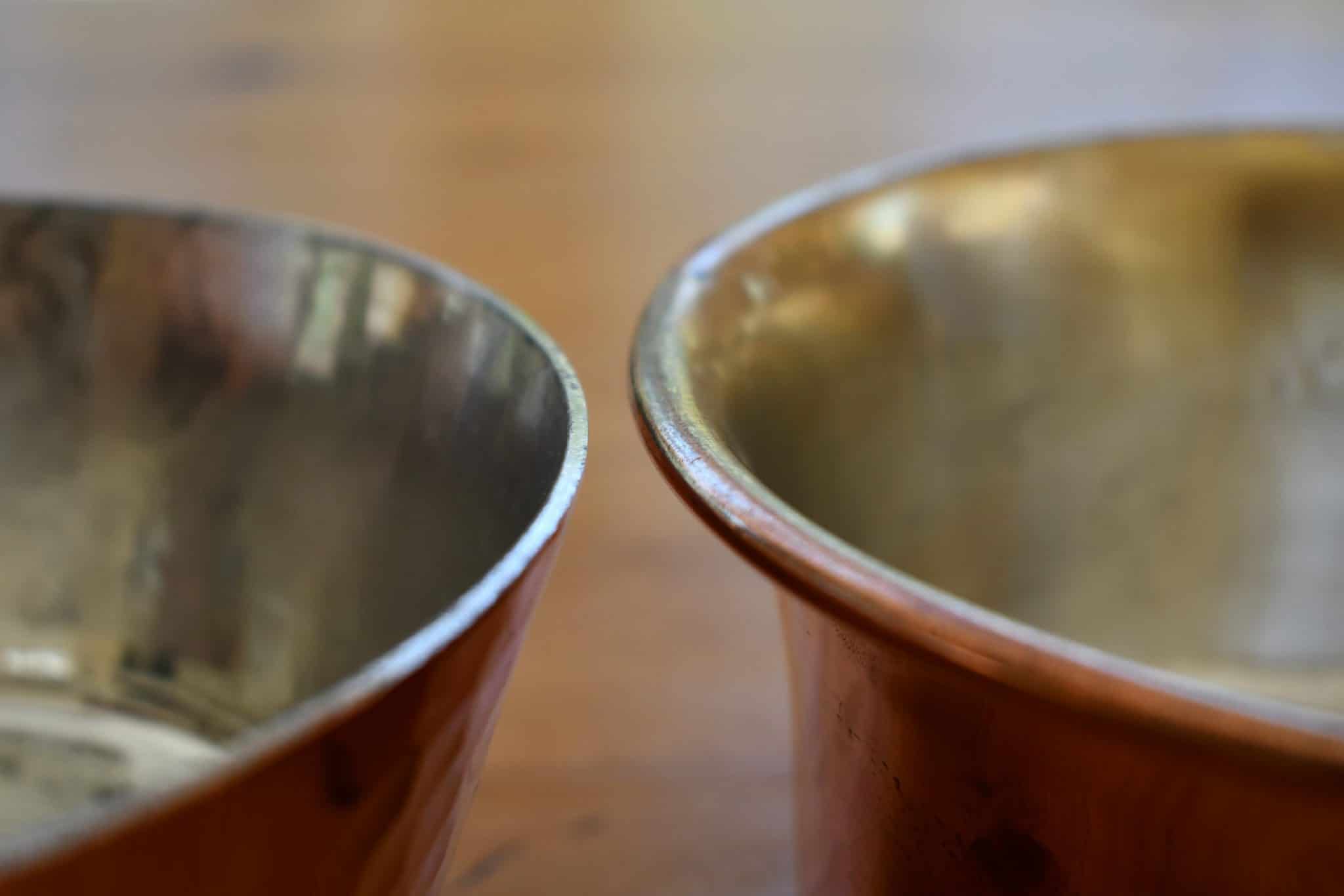
The reinforcing ring must be added when the pot is made. It’s hard to get good photos of this process, so I had to resort to grabs from Mauviel’s brand videos. The screen grab below shows the iron rings and the hammer used to curve the copper and tuck it under. (In the background are two jam pans that recently received that treatment.)
Mauviel spins these types of pans and attaches the iron ring while it’s still mounted on the lathe. The screen grab below shows the step where the craftsman is hammering the rim of the pot around the ring. He holds the iron ring in place with his left hand while he hammers the edge of the rim with his right. You can see one area where the copper has begun to curve around the ring.
As I alluded to above, some pan types are expected to have rolled rims to help with their structural integrity, but most everyday pans should be made thick enough not to need them.
Copper bowls and jam pans
Unlined copper bowls, culs de poule, and jam pans usually have rolled rims. In a French kitchen, a copper bowl is intended for whipping sauces or egg whites for mousses; the bowl shouldn’t be too heavy, and it’s not intended for heating food so it doesn’t need to be made of thick copper. Similarly, jam pans are designed to boil fruit for long periods of time with a large surface area to help foam rise to the surface to be skimmed; they are sturdy but don’t need to be extra-thick.
I own three bowls of various sizes and they’re each about 1mm thick and I think most bowls you’ll see online are about the same. For 1mm copper with this much surface area, the rolled rim adds necessary structural rigidity to keep the bowl shape from deforming and I have yet to see a bowl without one.
The danger for online buyers is that every single seller claims the bowl is “heavy” when in reality a fair amount of that weight is the iron band. Take, for example, this bowl from my collection. It’s not very big — 24cm wide to its outer edges, about 9 1/2 inches, and the rolled rim is 12mm thick, or about half an inch. The bowl weighs 1100g (2.43lbs) and my guess is that the iron band makes up at least a third of that weight.
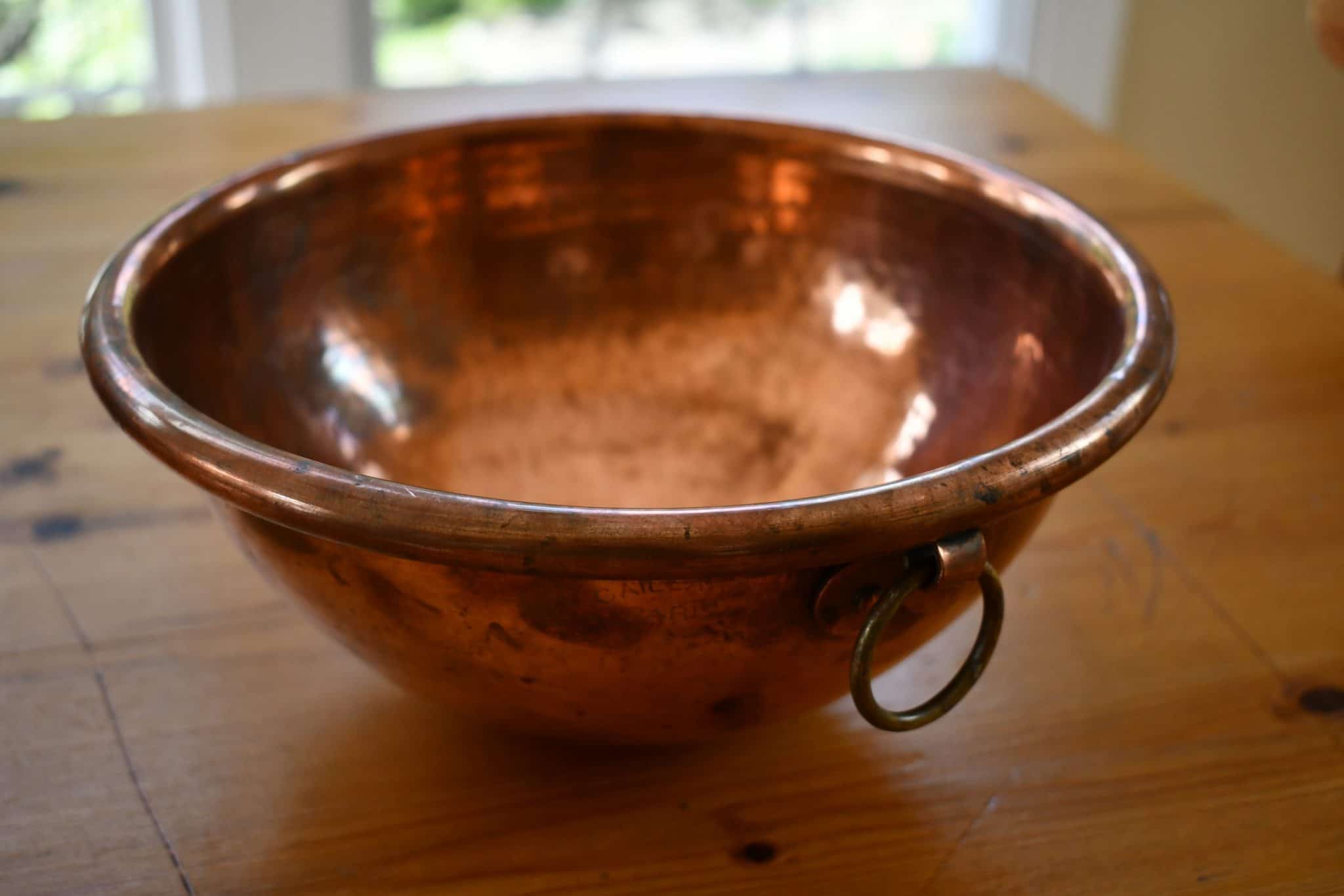
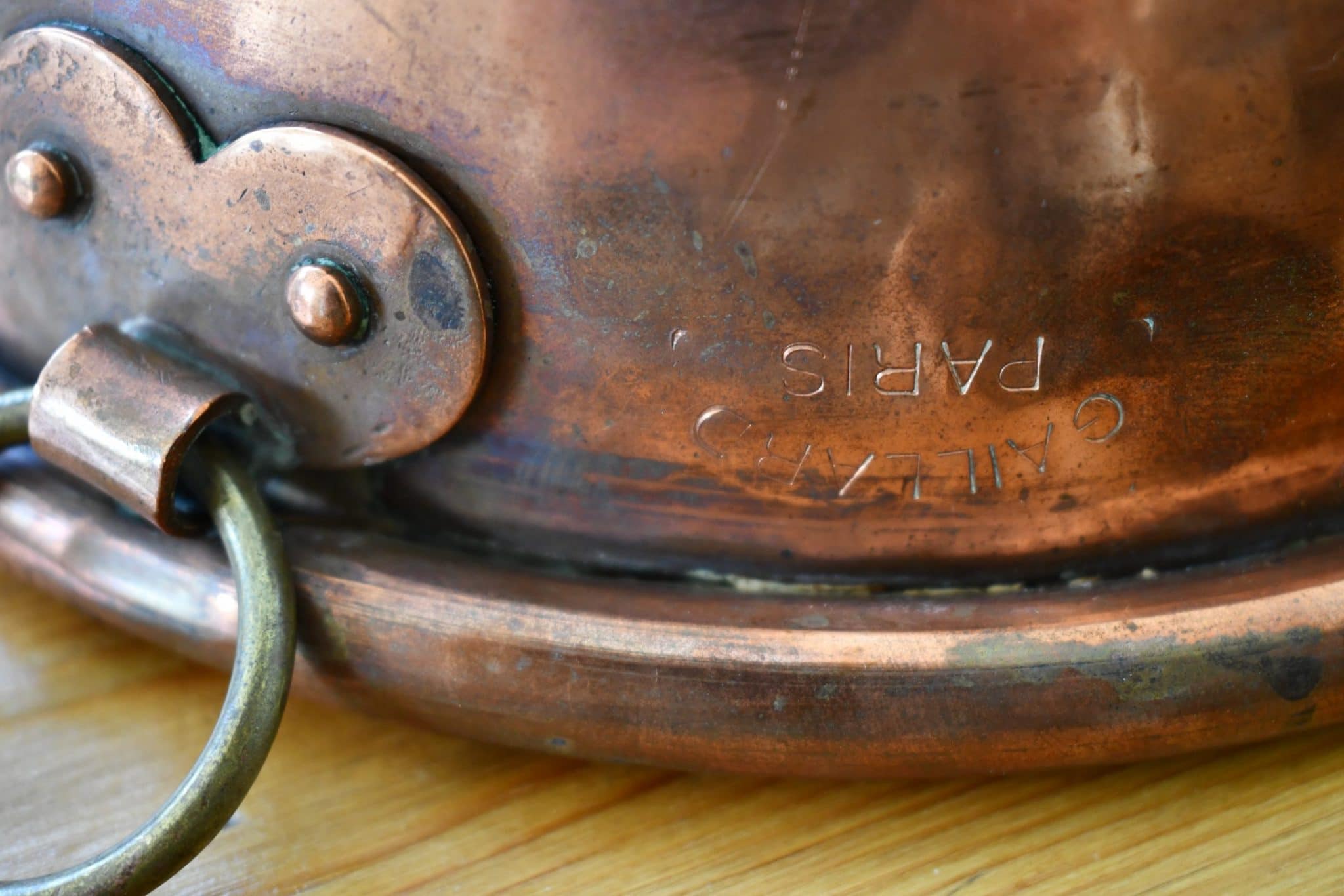
In the case of this bowl, that wasn’t a problem for me — the price was fair and I knew what i was getting. (What I didn’t know about this bowl when I bought it is that it has a forged Gaillard stamp, but that’s not the bowl’s fault.) But you may also see sellers who insist that a pan is extra heavy without distinguishing between the weight of the copper and the weight of the rim. (They may not even know there’s iron in the rim at all!) Ask the seller to measure the thickness of the copper below the rim before you decide whether or not you’ve found an exceptionally thick bowl or pan.
Fish pans
Another type of pan that tends to have a rolled rim is a covered fish poaching pan: a poissonière, turbotière, or truitière. The intended cooking use is to boil or simmer broth in the pan, lower the fish into it, and then lift the fish out when it’s done. The pan’s job is simply to heat and contain the liquid (and prevent evaporation), which is not a difficult task; the liquid won’t exceed 212°F (100°C) and the water distributes the heat throughout the broth so there’s no hotspots or scorching. There’s no special need for thick copper’s superior heat retention and distribution, so most pans of this type are fairly thin. I have two: one is 1mm thick and the other is 1.2mm thick, both with rolled rims.
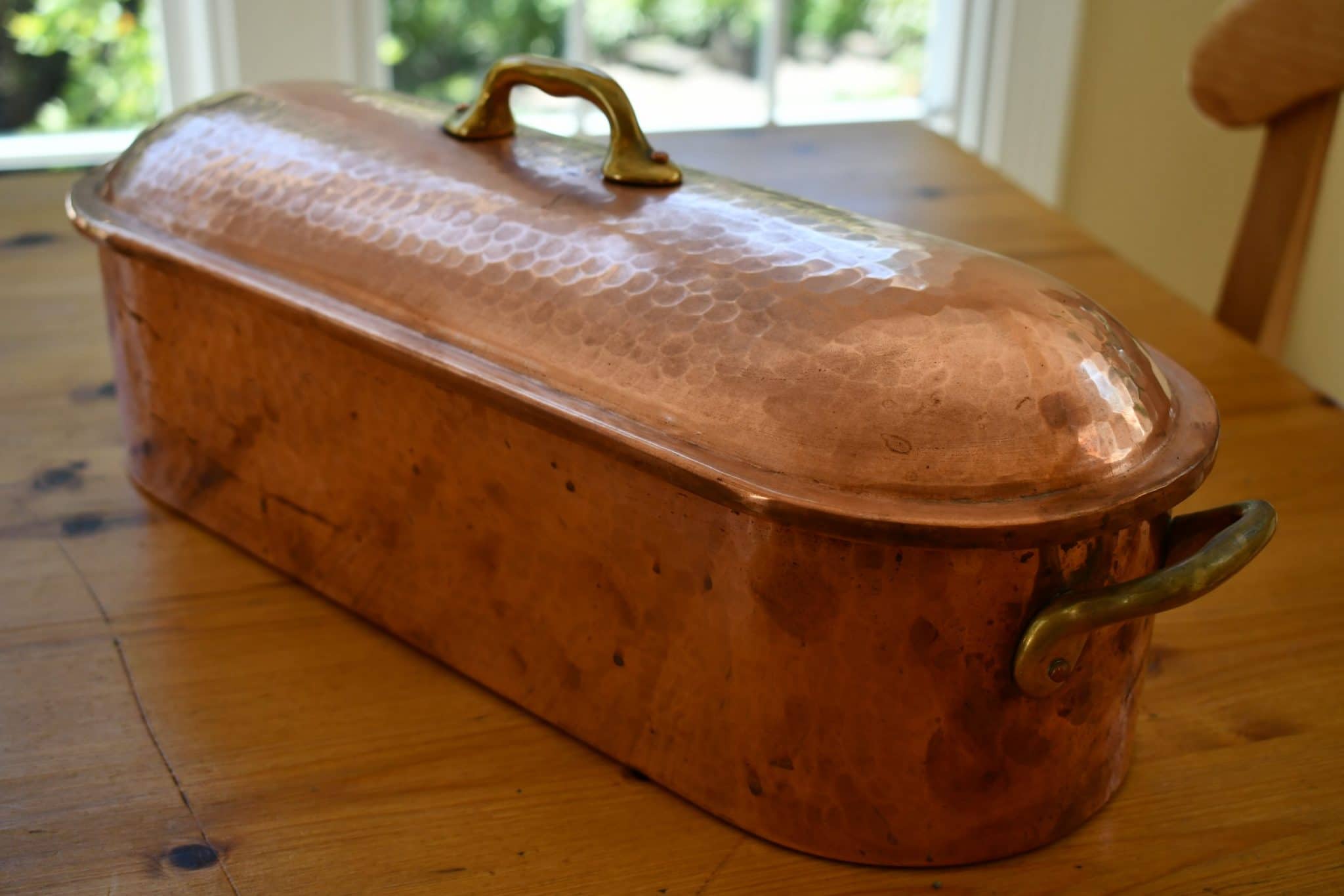
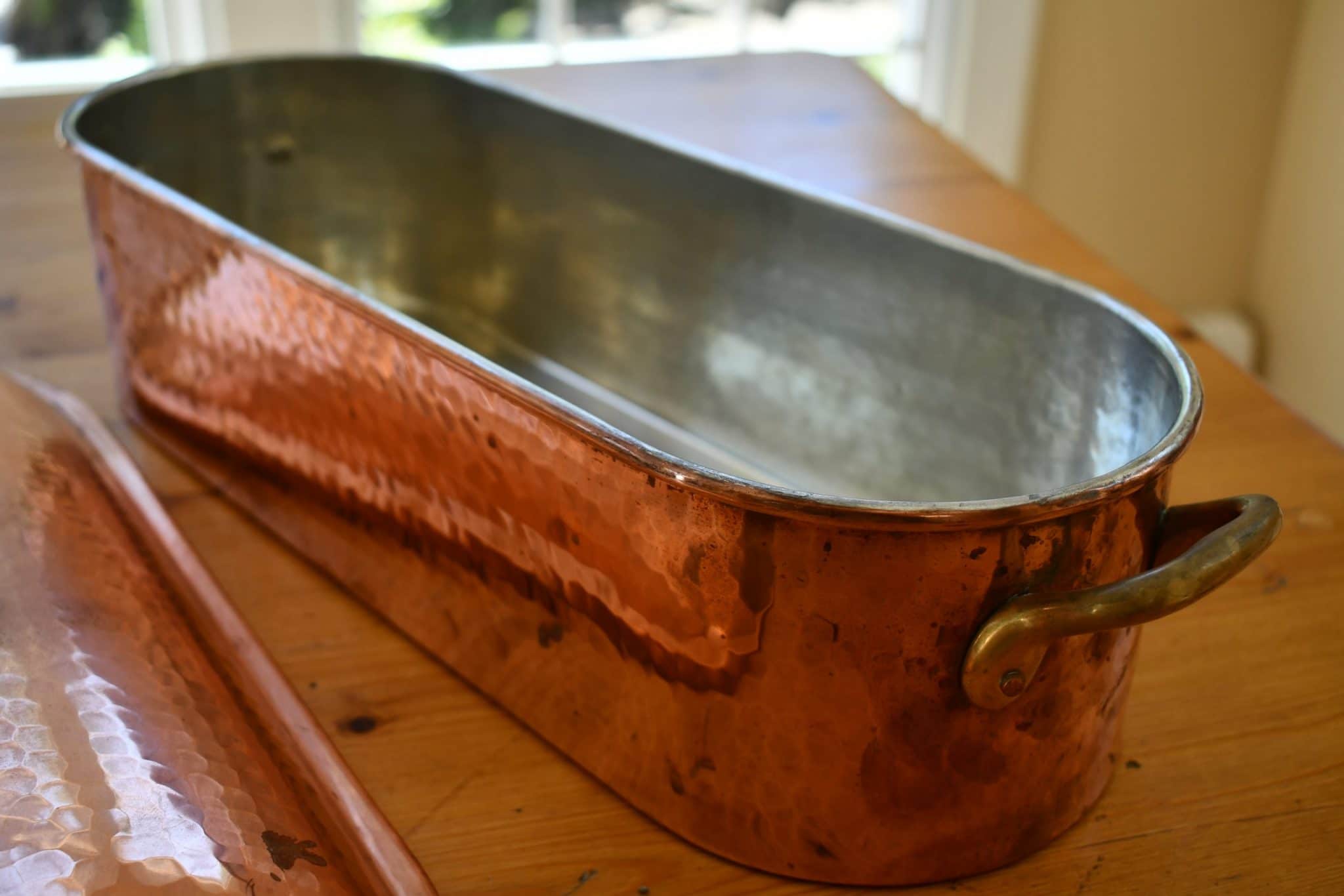
Warning signs
Beware of everyday pots — saucepans, skillets, stewpots, stockpots, and rondeaux — with rolled rims. You do not see rolled rims on high-quality vintage copper pots of these types because the pots were made from copper sheet thick enough to withstand use. A rolled rim on an everyday pan is a sign that it’s so thin that it needs structural support.
All the rolled-rim pans below were for sale on eBay at the time of this post (early July 2019). None of the sellers provided a weight or thickness for the pot, most likely because they’re quite thin and lightweight. If you were to buy a pot like any of these I would suggest displaying it and not using it for cooking. The pots are by and large unstamped, but I suspect they were made in Portugal or South Korea.
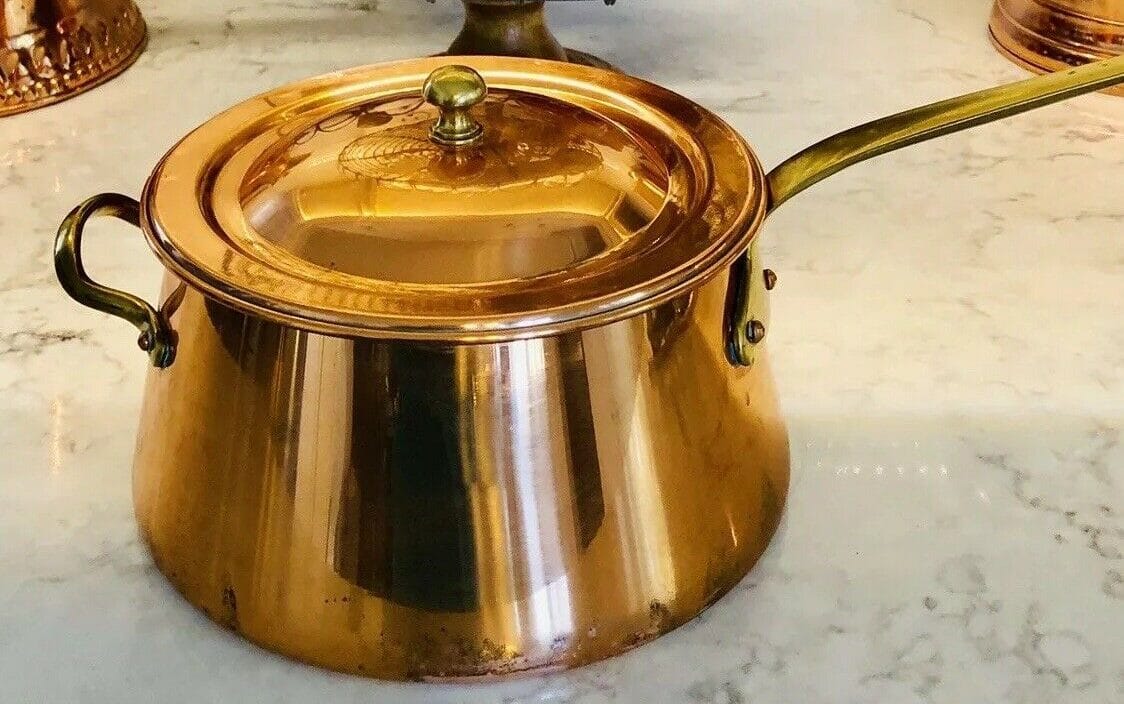
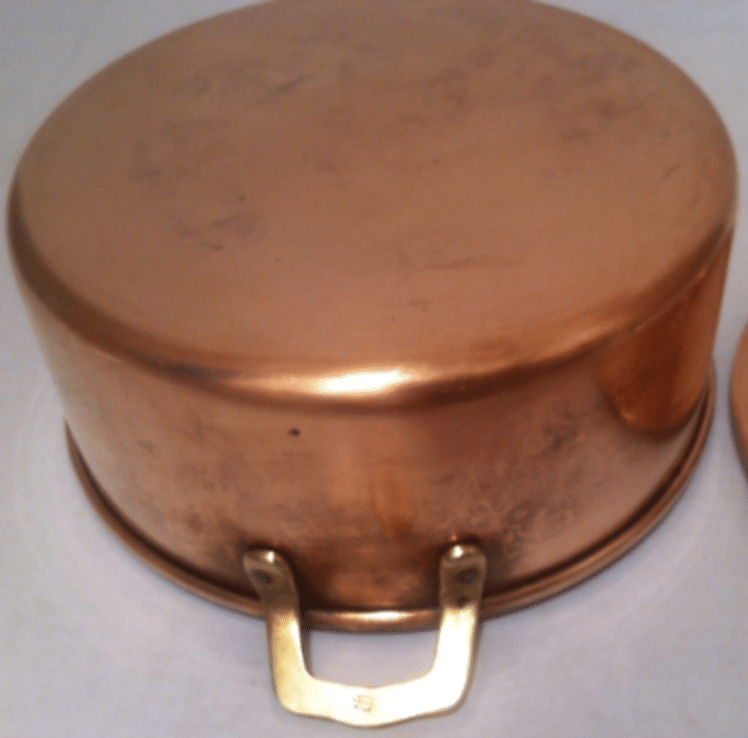
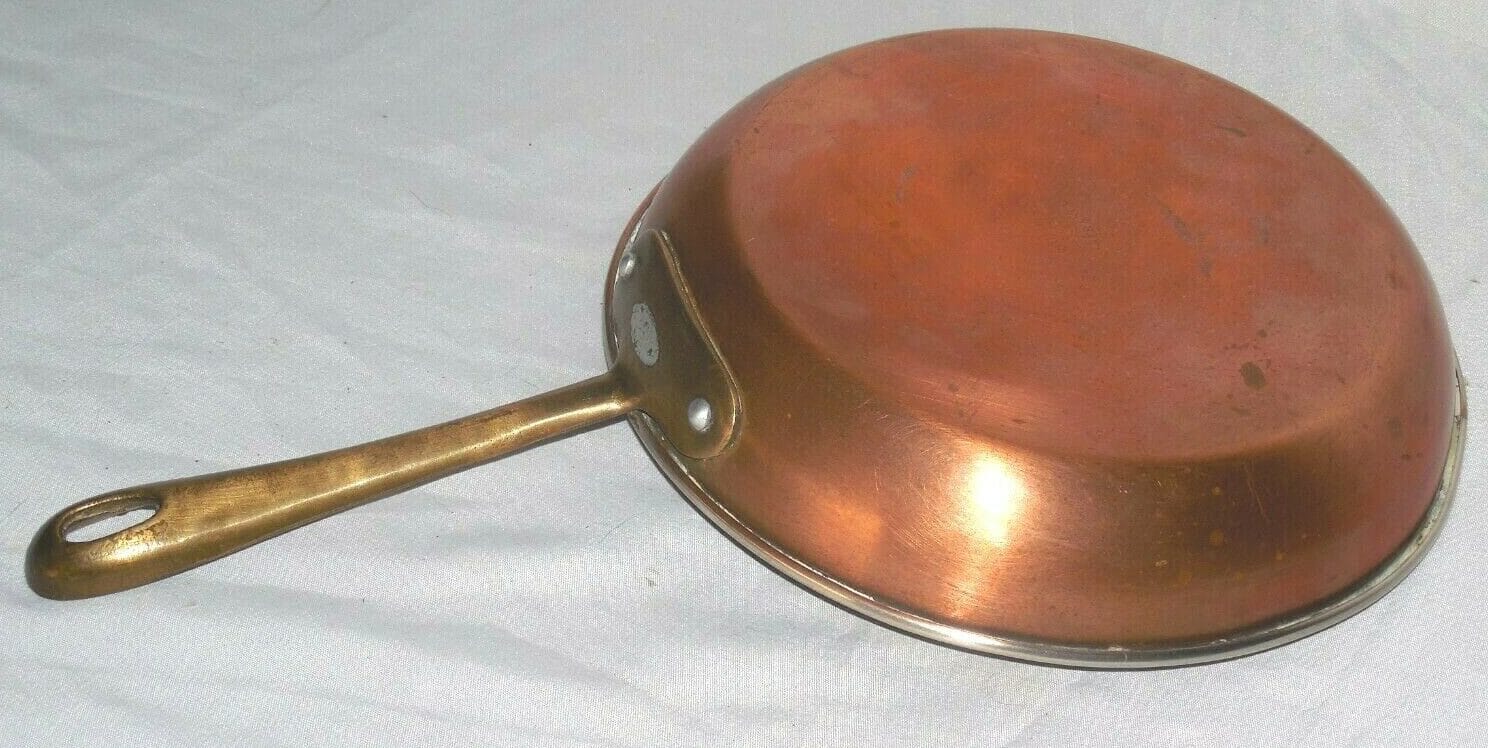
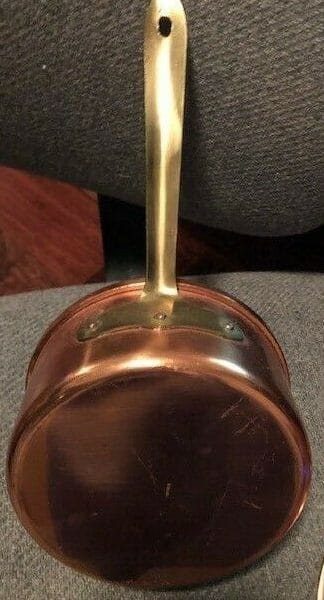
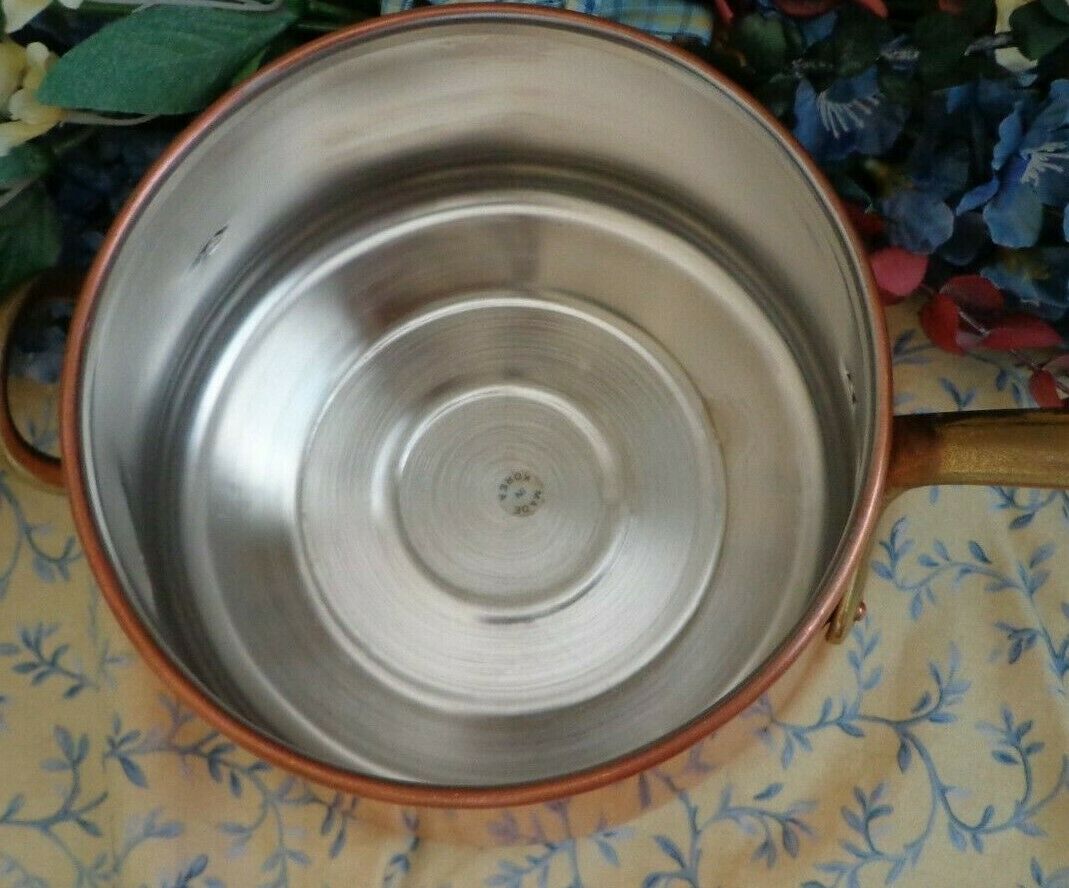
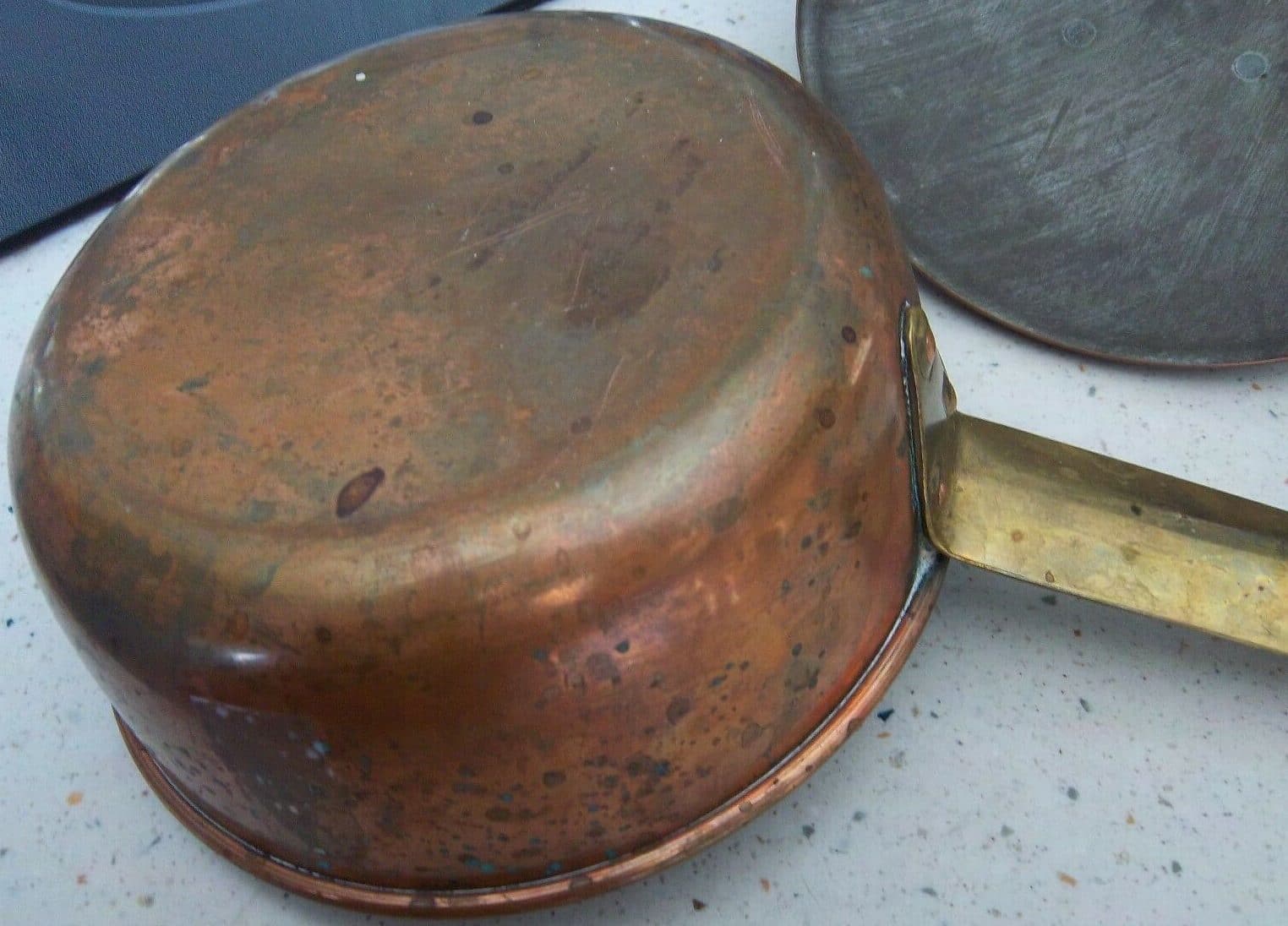
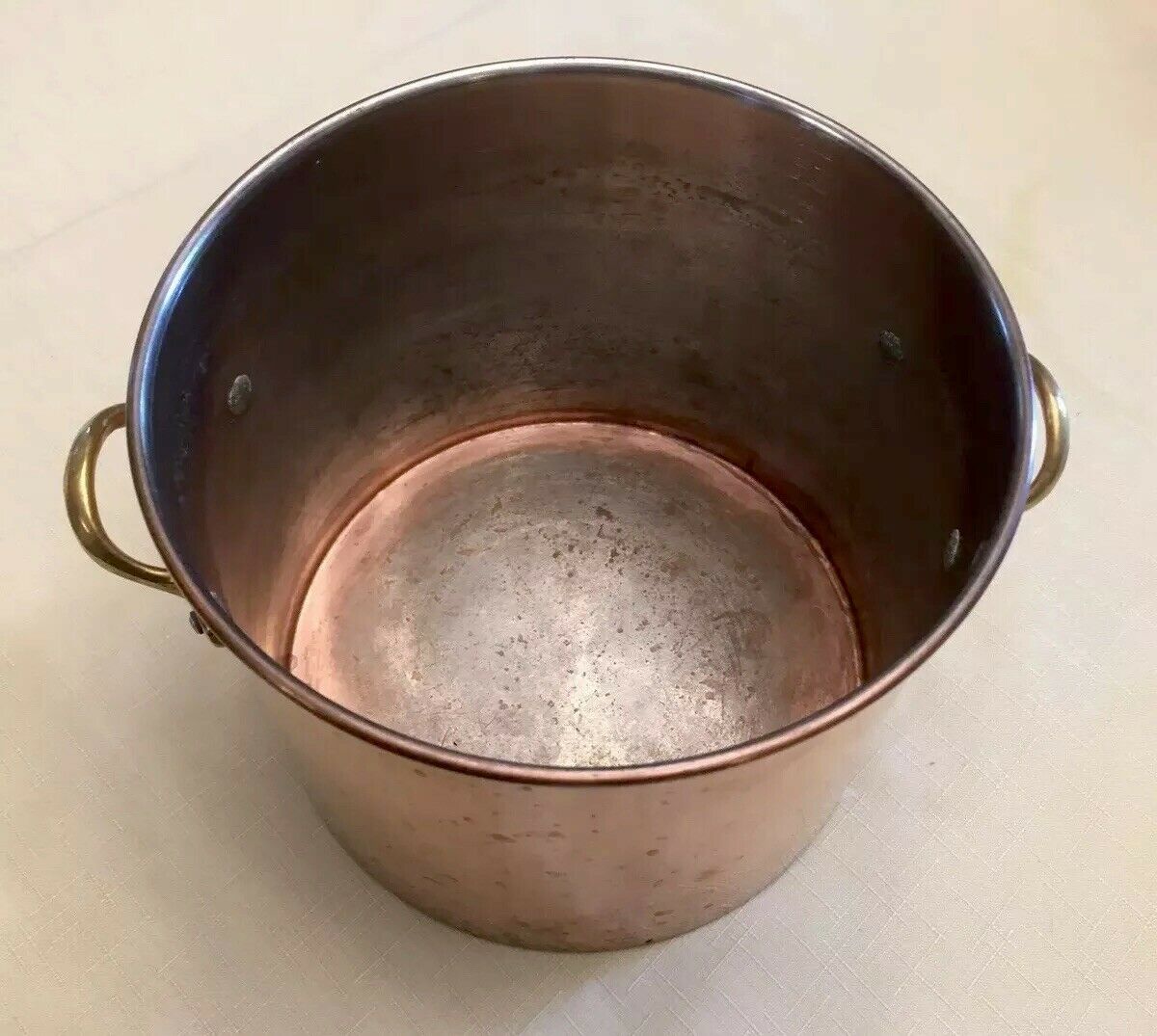
French pots and pans can also use rolled rims to compensate for lack of copper. For example, this vintage French Windsor of mine is .7mm thick. It’s lovely, but it’s too lightweight for cooking.
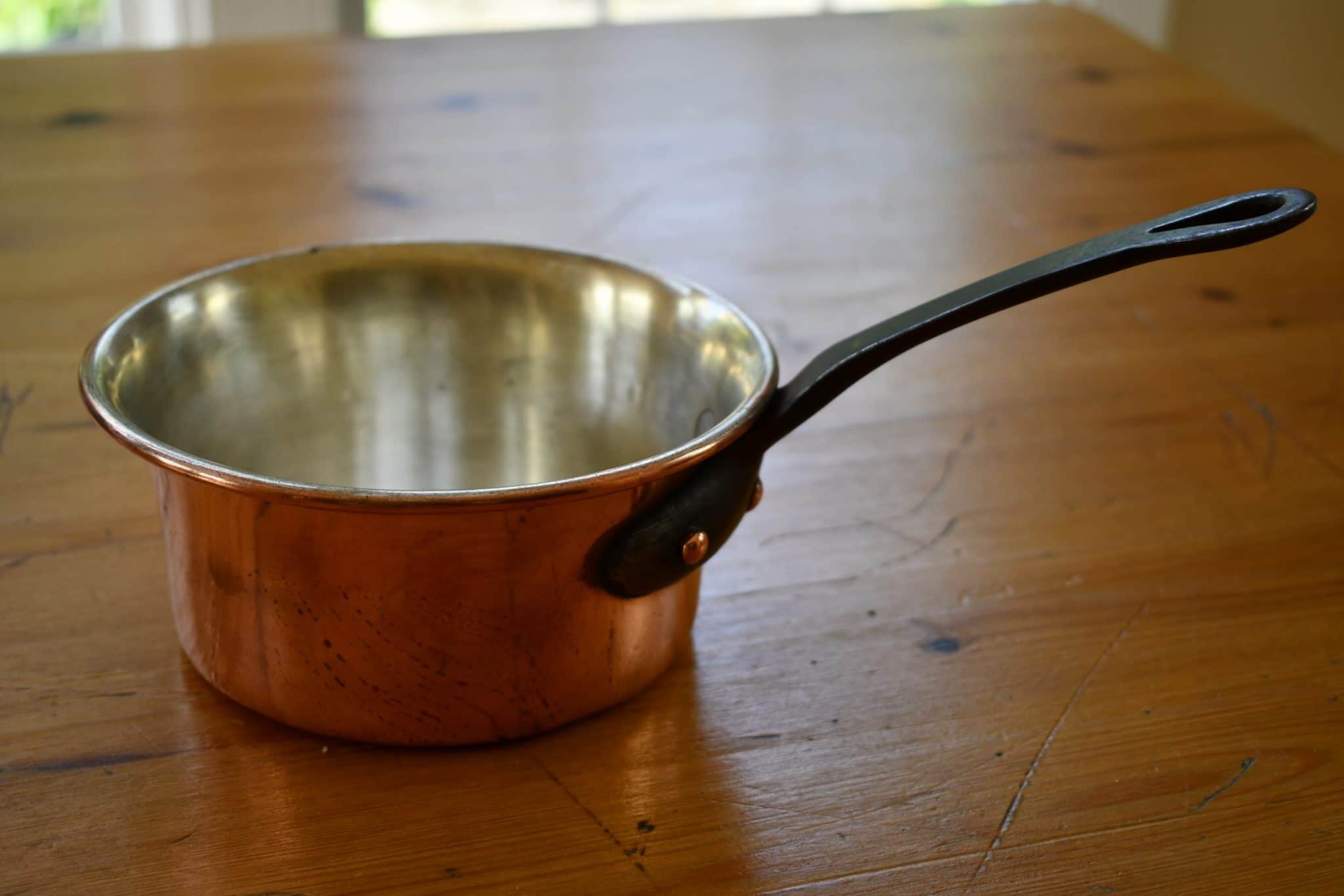
Rolled-rim pans are still made today, even on expensive high-end lines. If you see a rolled rim on a Ruffoni piece, it’s their tin-lined “Historia Décor” line of copper that’s 1 to 1.5mm thick. That is not a lot of copper (hence the “decor” in the name!). The rolled rim is necessary to stabilize the pot, particularly for larger sizes. (If you want my opinion, Ruffoni copper is radically overpriced for the amount of copper you get.)
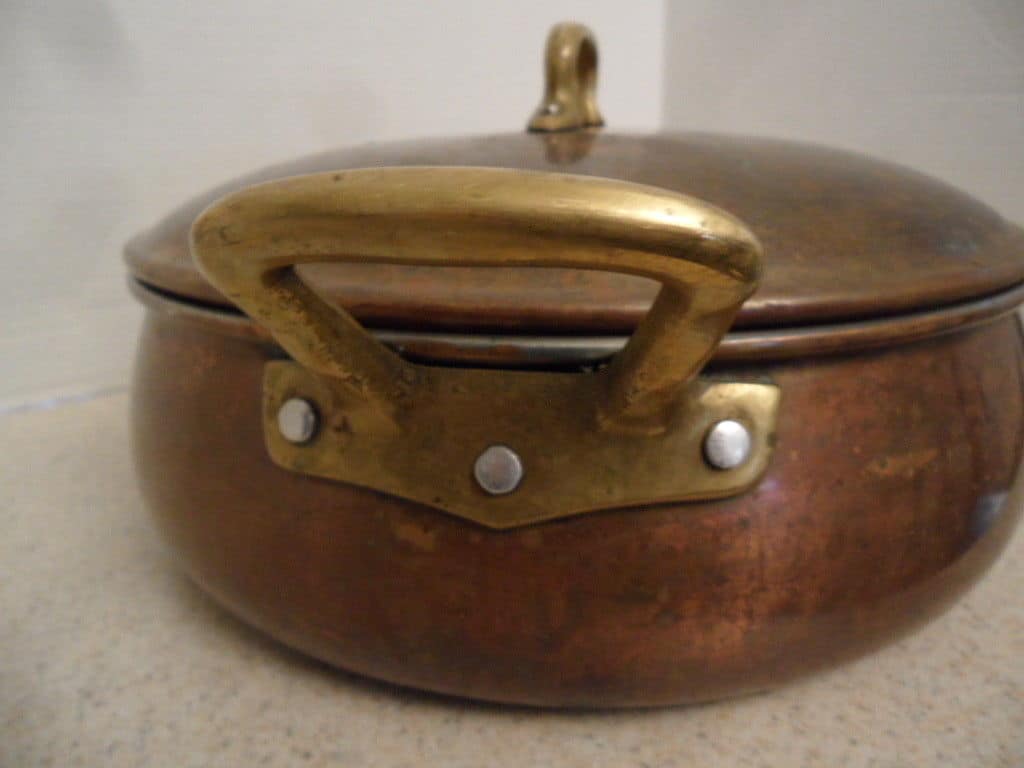

If you are looking at a pot with a rolled rim, consider whether the rim could indicate a compromise in quality. Is the pot of a specialty style that usually has a rolled rim, like a bowl, jam pan, or a fish pan? In that case, ask the seller for the thickness of the copper below the rim and decide for yourself whether it’s worth the price. Could the rim be compensating for thin copper in a pan that should be thicker, like an everyday saucepan, skillet, stockpot, et cetera? Even a well-priced pan could end up being a bad buy if it’s so thin you can’t use it.
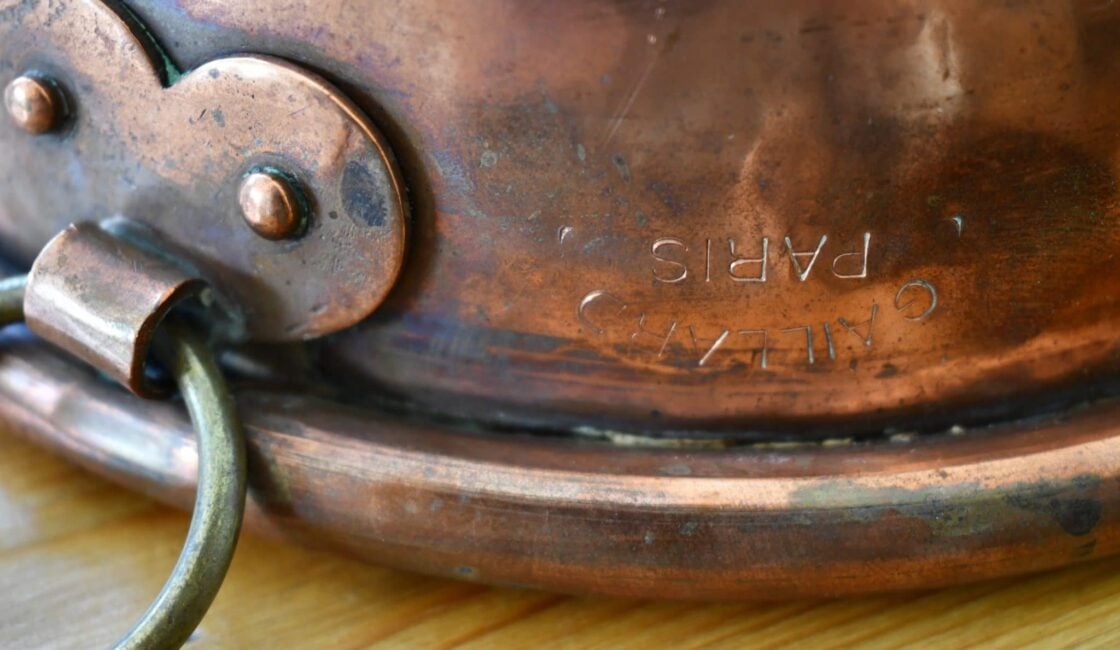

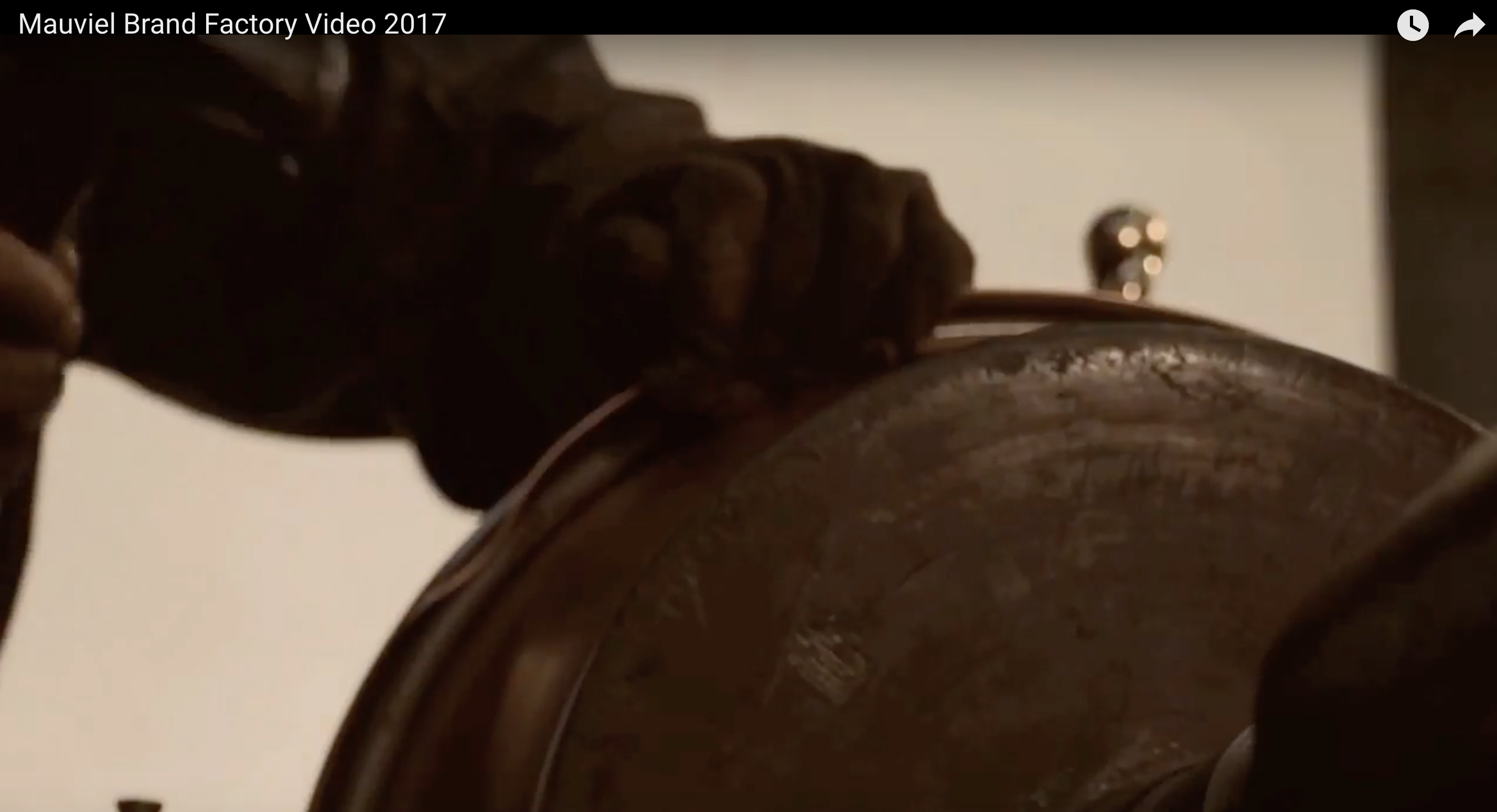
This was really great to know. I thrifted a set of copper chargers, each with a rolled rim. Copper doesn’t rust, and yet just under the rolled edges, on the underside, I could see rust. Now I know why. Thank you!
This is bad information. Just visually, there is no way the rim is a third of the weight of the bowl. It would be lucky to weigh 1/5 of the copper bowl.
Tom, I understand your doubt here, and I acknowledge that I am making an estimate — but I stand by it. I was speaking specifically about my 24cm bowl: it’s petite and so there’s not much copper in it, just a 1mm dome, and the rolled rim is visually quite thick, of a similar thickness to the rolled rim on my larger bowls. My point was that a rolled rim can make a smaller copper item feel more substantial than its copper content would justify. For larger diameter bowls, the iron ring would certainly constitute a lesser proportion of the item’s total weight.
Hi Tom, a little critical thought can easily support VFCs claim here.
Being generous and assuming 1.5mm of copper at the rim, with the rim measuring 12mm, the iron band would have a thickness of 9mm. It’s circumference would be approximately 23cm (around its central axis). It is thus very easy to calculate that it’s volume is 46cm3. Assuming the band is steel rather than iron, with a density of 7.84g/cm3 it would have a mass of 360g. Or, 32.7% of the total mass of the piece.
The vast majority of items that have a rolled rim are made of thin copper. However, I am not sure about some of the old whipping bowls (circa 1880-1930). Unfortunately, my measuring equipment does not allow me to measure the copper thickness on these bowls. But on my own bowl, I can make a pretty good estimate of the thickness of the inserted metal ring, as the rolled rim has been bent up a bit from the corrosion of the iron. I assume a ring with a diameter of about 1 cm. My bowl has a diameter of 31 cm (measured from center to center of the rolled rim). From this follows a circumference of 97 cm and therefore also the length of the metal ring. This length multiplied by the specific gravity of iron 7.88 g/cm³ gives a weight of 764 g for the inserted metal ring. My bowl weighs an amazing 3.1 kg, so the copper accounts for about 2.3 kg or 75% of the total weight. As I said, certainly not a typical example and I had to estimate the thickness of the iron ring. But the method could probably be applied to other items where you can measure or at least estimate the thickness of the iron wire.